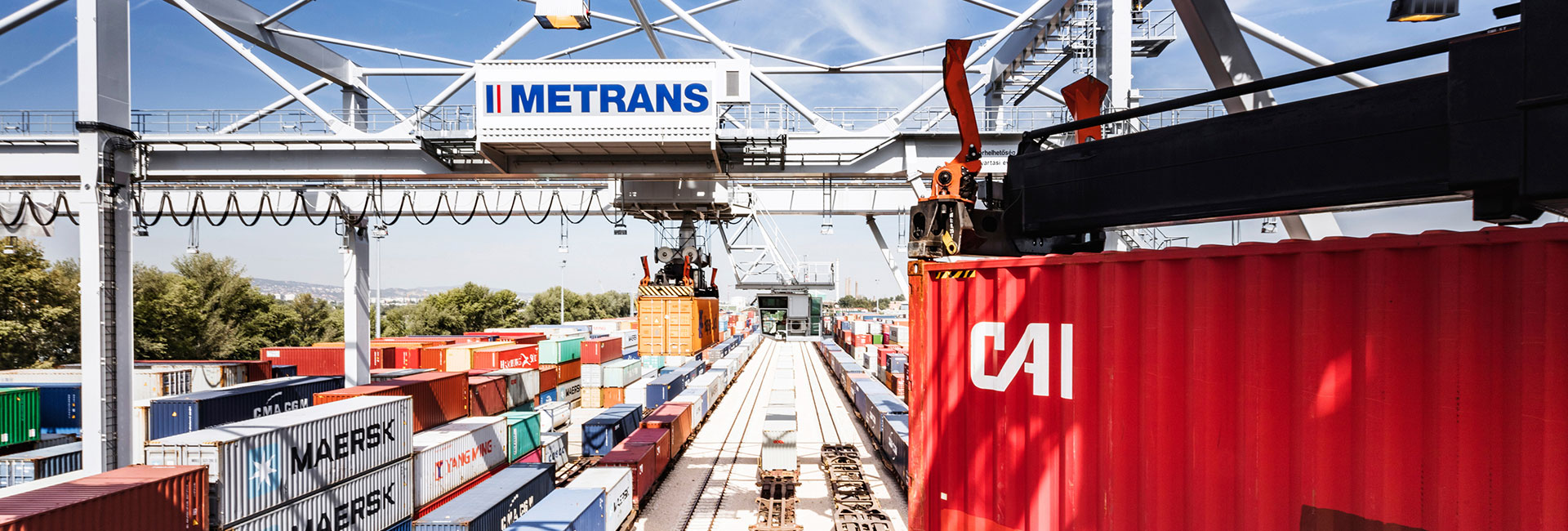Some container terms
The port is the backbone of the national economy in Germany, said Sönke Fock, Chief Executive of the Hamburg Employment Agency ...

Around 300 kilometres of track, almost 2000 weekly services and 200 freight trains per day make Hamburg the largest rail port in Europe. Almost every second container leaves or arrives in the port by rail. Despite the pandemic, last year railborne freight set a record: About 2,800,000 TEU were handled, an advance of eight percent in containers transported. For the first time, environment-friendly rail took a larger share of hinterland traffic than trucking. Making that possible were Hamburg Port Railway, responsible for the entire infrastructure, rail operators, and service providers like HHLA subsidiary Metrans Rail.
Alternative fuels will be a fascinating topic for new entrants. Truck manufacturers are joining in on those. Trade is brisk in electrically propelled trucks and buses for regional and local services. For long haul, even hydrogen could gain acceptance as an alternative energy source. Many driver assistance systems are ensuring extra safety behind the wheel. That starts with the tempomat & interval warning systems and today extends to electronic mirrors and sensors to reduce blind spots. Even laborious gear-changing belongs in the distant past.
The BGL – Federation for Heavy Goods Transport, Logistics and Waste Disposal has discovered that the proportion of professional driver trainees has been growing for years and is approaching the ten-percent mark. That truly represents an advance for equal rights, since the female proportion of truck drivers generally is no more than 1.9 percent, according to the BGL.
Current BGL estimates suggest a shortfall of 60,000 to 80,000 truck drivers in Germany alone. This will actually increase further. Around 30,000 to 35,000 are taking well-earned retirement every year, succeeded by no more than between 15,000 and 20,000 new drivers.
For Peter Kiss, CEO of Metrans, one thing is certain: “With other technical solutions as yet insufficiently matured, in present conditions it’s only by rail that freight traffic can function in climate-friendly fashion.” One figure impressively confirms this verdict: ‘Rail transport emits 110 times less CO2 than trucking. Under the HHLA umbrella, Metrans aims to go one step further and to be completely climate-neutral by 2040, or to secure a balance between carbon intake and emissions. “Transfer of traffic from road to rail is a crucial lever for improving the climate. Climate-friendly logistics belong to the future, so we aim for CO2-neutral transport,” explains Kiss. For example, Metrans is going for hybrid and electric locomotives. The company also aims to largely electrify terminal processes. For example, hybrid shunting engines are already in use. In addition, orders have been placed for electric rail cranes. The required current will be sustainably generated. Despite traffic growth, in 2021 CO2 emissions on the Metrans network were reduced by around 60 percent. The company is compensating for all currently unavoidable emissions through certificated development projects.
Shifting containers by rail calls for more than just a locomotive and a gaggle of railcars. Container storage for shipping and leasing companies; sale/leasing of new and used containers; maintenance, cleaning and repairs; and repositioning throughout Europe – all these services are essential for transporting containers. Metrans has been meeting these needs for almost 31 years. That all started in Prague in 1991, when Jiri Samek founded the company. With two block trains per week, even then Metrans was already shifting large volumes of freight from road to rail. In its entire network, the total is now around 550. From the start, Metrans was a pioneer for sustained freight traffic. Peter Kiss, after Samek’s death in 2018 his successor as CEO, summarizes the company philosophy: “We offer simple and neutral solutions in the complex area of trimodal transport. Above all, we aim to assist our customers about differing, but sometimes very specific, situations.” With all-inclusive solutions for container transport.
Now as then, Metrans relies on vision and innovation. Energy efficiency and environmental compatibility are to the fore there. Back in 2004, the group accordingly opted to develop lightweight railcars. With correspondingly less rolling resistance and energy consumption, these weigh around four tons less than a normal railcar. These cars as also fitted with ‘whispering brakes’ that reduce movement and braking noise by up to 50 percent. The DigiTwin project also signals the way ahead. A ‘digital twin’ aims to digitally reproduce all the states of a railcar that would otherwise need recording by wagon inspectors. Digital recording simultaneously saves costs and time. Solutions like these enable Metrans to further develop rail freight transport as an efficient environment-friendly alternative to road traffic.